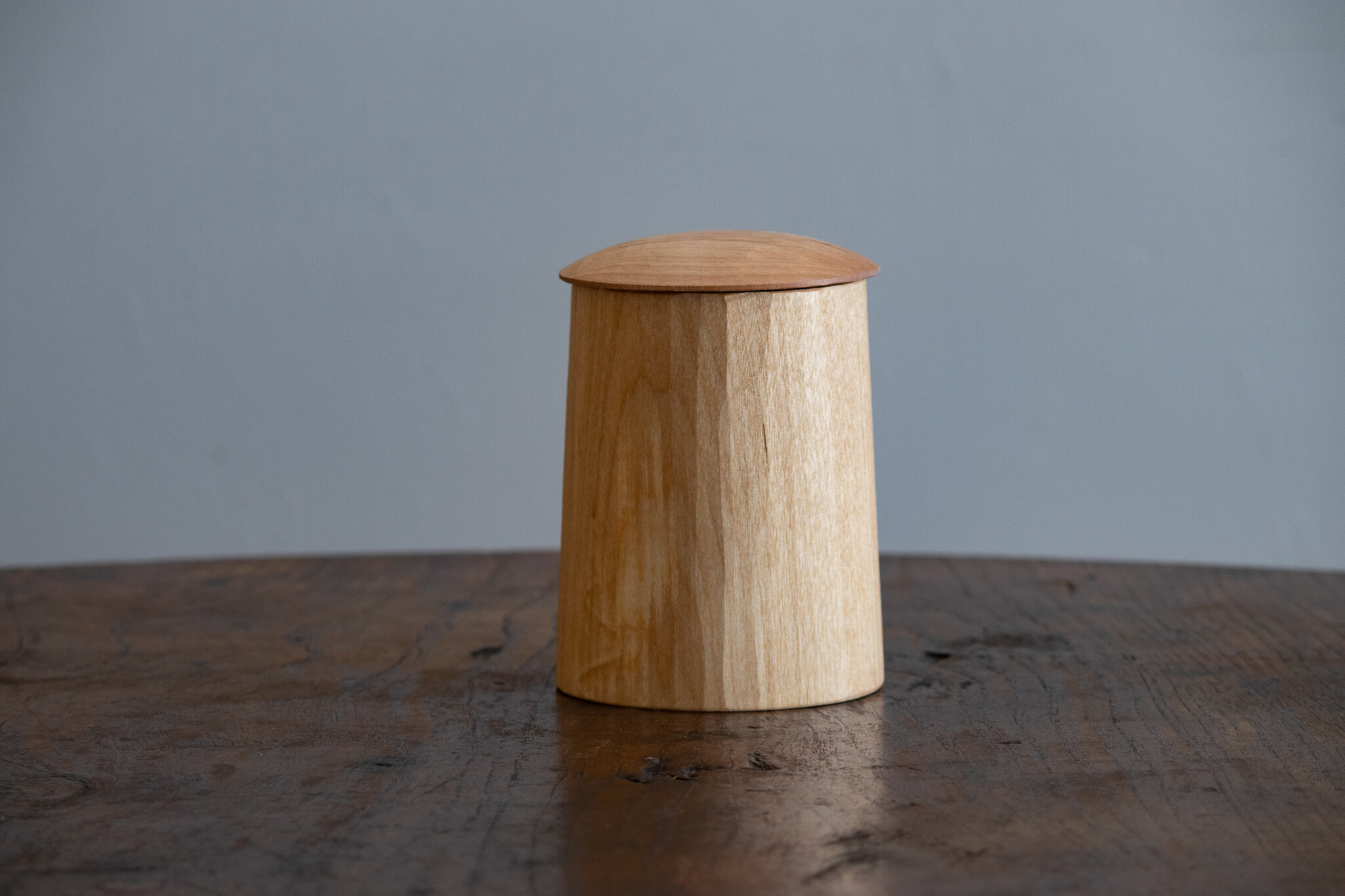Tea Canister Design
So, I’ve been developing this new canister design over the past 2 months and I thought folks might enjoy having the curtains pulled back for a peek into my process.
I need to clarify two terms that I use in the ‘designing’ process. First is concept—this refers to the overall function of the object ie. a salad bowl, a cup, a candle stick or in this case a lidded container. The design is what the finished object will look like. This includes its size, shape and proportions and what it’s made from, etc.
Every week I look at images, a lot of them, who doesn’t right? The best sources for the things I make are in books on historical woodenware and material culture, photos I took doing museum research and of course the internet. This supplies my brain with concepts and design details to draw from when it’s time.
New concepts and designs can come from many places. They can be inspired by a special order or when I’m giving a demonstration while teaching a workshop. My intentionally repetitive work flow also allows my mind to wander into a state that is fertile ground for new designs to spring from. There is also a more controlled process which begins with a raw concept. The concept could be born from a need to offer a more diverse selection to my customers or from the more spontaneous situations I’ve described a few sentences ago.
I build on the concept with design details systematically. I sometimes sketch the object to get the proportions and other specifics right. But most of the time I do this in my head while working. I learned to think in images during my timber framing days. When laying out joinery on a beam you have to be able to visualize it in its final position. Many times there are multiple joints on each face of the timber. Without the ability to see the timber and how it relates to the whole frame, laying out the correct joinery efficiently would be nearly impossible.
Once I have semi-solid ideas, I make a few examples. I allow a loose interpretation of each attempt, then compare them to further refine the details of the design. I analyze the way the chosen material, technique and process affects the design. I make adjustments along the way by troubleshooting techniques or the limits of the material, eventually considering the theoretical market value and finally settling on the plan for a limited run.
I’m doing all this because I want the production to flow smoothly and efficiently, thereby keeping a certain price point. I have a disdain for things that are too precious, too expensive, and mostly hype even though that may be the nature of handcraft in our modern times.
This canister design is the result of a patron’s special order. She gave me a set size requirement, but allowed me to make all the design decisions. Those restrictions forced me to explore proportions that I wouldn’t have intentionally considered. Because the container is used for tea ceremony, I wanted to create an object with a surface that blended with that aesthetic—natural, nothing showy, humble, something in between rustic and refined.
The process of making these combines hollowing and grooving with an electric lathe, hand fitting the base, allowing the body to dry, turning the friction fit lid, then hand planing the outer surface with a kanna (Japanese wooden bodied hand plane). The kanna leaves a glassy surface. I’ve chosen a Japanese product known as liquid glass for the final finish.
The coating is a form of silica that bonds with the wood fibers and oxygen to form a literal coating of hardened glass within the fiber of the wood. The beauty of this finish is that the wood retains its natural look. It doesn’t look as if there is a finish on it at all. (I plan to promote this product in the near future.)
I get immense inspiration from objects made and used in earlier times. Founder of the folk craft movement Soetsu Yanagi, says “We do not admire work because of the past, but because of its enduring present.”
I’m very conservative with my designs and I’m not under the delusion that I am creating something new—at least in concept form, yet I intend my work to stand the test of time.
A collection (remember the hype?) of this new canister design will be available sometime this month. We’re also working on updating our web shop with urushi lacquerware, bowls and another new product I’m developing—candlesticks.
I’m also offering a webinar next week through North House Folk School on shrink pot techniques and design. Check it out here.


